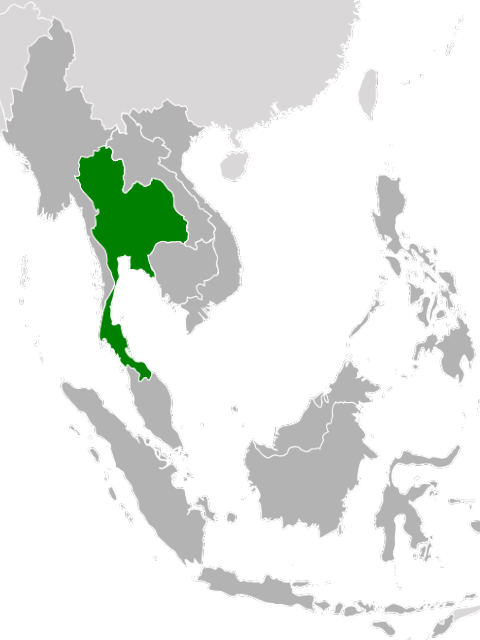ASEAN Member States
-
 Brunei Darussalam
Brunei Darussalam- Country profile
- Laws Policy & Strategic Plan
- EH & HIA Organization
- Training
- Best Practices
- Publication
- Research
- News
- Upcoming event
- Other
-
 Cambodia
Cambodia- Country profile
- Laws Policy & Strategic Plan
- EH & HIA Organization
- Training
- Best Practices
- Publication
- Research
- News
- Upcoming event
- Other
-
 Indonesia
Indonesia- Country profile
- Laws Policy & Strategic Plan
- EH & HIA Organization
- Training
- Best Practices
- Publication
- Research
- News
- Upcoming event
- Other
-
 Lao PDR
Lao PDR- Country profile
- Laws Policy & Strategic Plan
- EH & HIA Organization
- Training
- Best Practices
- Publication
- Research
- News
- Upcoming event
- Other
-
 Malaysia
Malaysia- Country profile
- Laws Policy & Strategic Plan
- EH & HIA Organization
- Training
- Best Practices
- Publication
- Research
- News
- Upcoming event
- Other
-
 Myanmar
Myanmar- Country profile
- Laws Policy & Strategic Plan
- EH & HIA Organization
- Training
- Best Practices
- Publication
- Research
- News
- Upcoming event
- Other
-
 Philippines
Philippines- Country profile
- Laws Policy & Strategic Plan
- EH & HIA Organization
- Training
- Best Practices
- Publication
- Research
- News
- Upcoming event
- Other
-
 Singapore
Singapore- Country profile
- Laws Policy & Strategic Plan
- EH & HIA Organization
- Training
- Best Practices
- Publication
- Research
- News
- Upcoming event
- Other
-
 Thailand
Thailand- Country profile
- Laws Policy & Strategic Plan
- EH & HIA Organization
- Training
- Best Practices
- Publication
- Research
- News
- Upcoming event
- Other
-
 Viet Nam
Viet Nam- Country profile
- Laws Policy & Strategic Plan
- EH & HIA Organization
- Training
- Best Practices
- Publication
- Research
- News
- Upcoming event
- Other
Thailand >> Country profile
 Thailand’s National Health Strategic Plan 2012-2016 is being finished by the end of this year. The Ministry of Public Health and Ministry of Natural Resources and Environment have continued the development of the 3rd National Environmental Health Strategic Plan 2017-2021 for dealing with environmental health issues in line with the 12th National Economic and Social Development Plan 2017-2021, and the relevant Sustainable Development Goals. The current situation of environmental health which have been concerned and taken into highly consideration by the government are including waste management, air pollution and haze in upper-northern, Toxic chemicals and health, quality of drinking water, food sanitation and environmental sanitation those can affect people’s ealth. The complexity of these issues requires multidisciplinary approaches.
Thailand’s National Health Strategic Plan 2012-2016 is being finished by the end of this year. The Ministry of Public Health and Ministry of Natural Resources and Environment have continued the development of the 3rd National Environmental Health Strategic Plan 2017-2021 for dealing with environmental health issues in line with the 12th National Economic and Social Development Plan 2017-2021, and the relevant Sustainable Development Goals. The current situation of environmental health which have been concerned and taken into highly consideration by the government are including waste management, air pollution and haze in upper-northern, Toxic chemicals and health, quality of drinking water, food sanitation and environmental sanitation those can affect people’s ealth. The complexity of these issues requires multidisciplinary approaches.
Air quality :
Air pollution is still the major problem in Thailand, however, it has been decreased continuously in average. In 2018, the particulate matter less than 2.5 microns in diameter (PM2.5), Ozone, and particulate matter less than 10 microns in diameter (PM10) still exceeded the National standard especially in Bangkok (during January – March 2019). There are many factors causes air pollution in Thailand including meteorological factor and point sources factor such as heavy traffic (Mostly in urban areas), open burning of agricultural materials, and industrial processes. The critical areas are in the Northern Thailand, Bangkok and areas in the Na Phra Lan Subdistrict, Saraburi province. Indoor air quality is becoming more challenge in urban areas due to more and more high-rise buildings. Moreover, the biomass power plants will be promoted for alternative energy in many areas of Thailand. The health impact assessment and surveillance in those areas are needed.
Water and sanitation :
(1) Drinking water and food sanitation
In 2018, More than 98 percent of the population of Thailand has access to improved sources of drinking water, the water quality in certain areas of the country (rural, remote, high land, border etc.) remains a serious concern to health authorities. In addition, there are incidences of water contamination from toxic chemicals in some agriculture and industrial areas. This problem has been addressed and taken into action by related organizations. The DOH has continually carried on the surveillance system, provided technical support and built capacity of provincial officers to deal with this issue.
Food sanitation situation, through intensive promotion of the Clean Food Good Taste standards in foodservices for the local people and international tourism, more restaurants and street food stalls have improved their food sanitation and hygiene over the years. Regarding the DOH report in 2018, about 86.3 % of surveyed restaurants and street food stalls were complying with the standards. Each was awarded the Clean Food Good Taste certificate. In 2019, the DOH had already launched the regulation of food restaurant hygienic.
(2) Human waste management
Thai government has launched the Public Toilet Development Plan since 2006 aimed to improve public toilets focused on 12 types of public toilet with three main characteristics of public toilet standard: healthiness or hygienic condition (H); accessibility (A); and safety (S), commonly known as HAS Standard. The overview of public toilets in 2015 revealed that totally 71 % of public toilets met the standard. Moreover, about 98.94% of the population have access to improved sanitation, excreta management and operation of sludge treatment plants is still a big challenge. Health effects from wastes contamination and poor sanitation are need to be assessed and well managed. The incidence of food and water-borne diseases especially diarrhea and food poisoning, has been rising as the illnesses are associated with the chemical and bacterial contamination of food and water, and cholangiocarcinoma caused by liver fluke. Human waste management, it is responsibility of local governments. However, it is found that many of them need to have effective excreta management system, including effective law enforcement. The DOH has promoted the good practice model and built capacity of local government officers for improving their practices. The focus areas for urgent management are in the 27 provinces in northeastern.
Hazardous wastes and healthcare wastes
In 2015, the total amount of hazardous wastes was estimated 951,000 tons, and healthcare wastes from the hospitals and clinics were approximately 53,868 tons. In this number, approximately 65 % of healthcare wastes were disposed properly, both by private company and local governments. Such agencies must dispose their wastes following the Ministerial Regulation on Infectious Waste Disposal B.E.2545 (2002), such wastes are mostly disposed by incineration systems at hospitals, outsourcing, and managing by local governments. The management of healthcare waste faces some problems related to the manifest system of outsourcing, and air quality monitoring system according to the law related to environmental quality promotion and protection. In addition, the Ministry of Public Health is on process of developing Master Plan on Infectious Waste Management 2017-2021 which aimed to strengthen infectious waste management system through fully engagement of all stakeholders. Moreover, MOPH has promoted the GREEN and CLEAN Hospital since 2010 aims to promote awareness and responsibilities of the hospitals and all level of health care facilities which are under Ministry of Public Health to reduce and manage all kind of waste from the hospital properly, including improvement of other aspects of environmental health such as healthy rest room/toilet, green and healthy environment, food safety and energy saving.
Toxic chemicals and hazardous substances :
Chemical types used in Thailand are classified as: chemicals for agriculture including pesticides (organo-phosphates, carbamates, organo-chlorines); chemicals for households including insecticides, chemicals for eliminating annoying animals and those used in public health purposes such as cleaning agents, disinfectants, medical products, and pharmaceuticals. Concerning health impacts from toxic chemicals and hazardous substances, not only the use of chemicals with incorrect methods and behaviors, including product disposals but also found accidents and illegal dumping affecting lots of people in neighboring areas. The toxic chemicals contamination was found in the environment and food chain in some agriculture and industrial areas, it needs to be identified, assessed, and managed by multidisciplinary approaches. Health risk assessment and Health Impact Assessment are promoted for provincial health officers, and the occupational medicine clinics have been set up at the hospitals in those areas.
Climate Change
Thailand faces inland river flood risk due to climate change and facing to heat-related morbidity increase in every year. Currently, Thailand is implementing projects on health adaptation to climate change and is taking action to build institutional and technical capacities to work on climate change and health. Country reported data indicate there remain opportunities for action: A (Draft) National Strategic Plan on Climate Change and Health B.E. 2015–2020 is being processed. This Strategic plan will be a national framework for building resilience to climate impacts and health risks which include adaptation and mitigation measures
The national policy on environmental health in Thailand
The Third National Environmental Health Strategic Plan (the 3rd NEHSP) 2017-2021 had already submitted to the cabinet and established for networking. It aims to create effective environmental health system at all level through strong cooperation among stakeholders. The healthy settings approach is still used to promote healthy cities, communities and settings. The priority issues in this plan are including air pollution, waste management, water and sanitation, toxic chemicals, and climate change. The high-risk areas and vulnerable people are also given more concerns. The active roles of local authorities is required for developing environmental health services to meet the Standard of Environmental Health Practices, and Environmental Health Accreditation (EHA) for Local Authorities will be promoted continuously in the 3rd plan.
ASEAN ENVIRONMENTAL HEALTH AND
HEALTH IMPACT ASSESSMENT
88/22 M.4 Tambon Talad Khwan tiwanond Road
Amphur Muang Nonthaburi 11000
Contact Us
: +662-590-4395, 4484, 4187
: +662-590-4321
: eh.hia.asean@gmail.com
Copyright 2019 Department of Health Ministry of Public Health Thailand
Design by DreamTemplate

